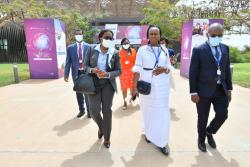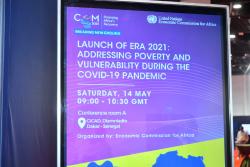Background
The disruptions caused by the coronavirus disease (COVID-19) pandemic pushed an estimated 55 million Africans into extreme poverty in 2020 and reversed more than two decades of poverty reduction in Africa. Non-poor people whose level of consumption was at $1.90–$2.09 a day (0–10 per cent above the poverty line) fell into poverty because of the pandemic, since even a small amount of consumption volatility could push them below the poverty threshold. Poor people with few assets, limited access to credit, informal employment and low wages were particularly severely hit by containment measures introduced during the pandemic.
Economic Report on Africa 2021 contains an analysis of the causes and consequences of the increase in poverty during the pandemic. It also provides a framework for the analysis of poverty caused by other shocks and of vulnerability to future shocks such as climate change. The report provides national estimates of people who are vulnerable to falling into poverty in various country clusters. The vulnerabilitypoverty-resilience framework set out in the report provides insights into microlevel factors associated with moving into and out of poverty and why some households remain poor for a prolonged period. Such insights can be used in guiding the formulation of evidence-based policies.





